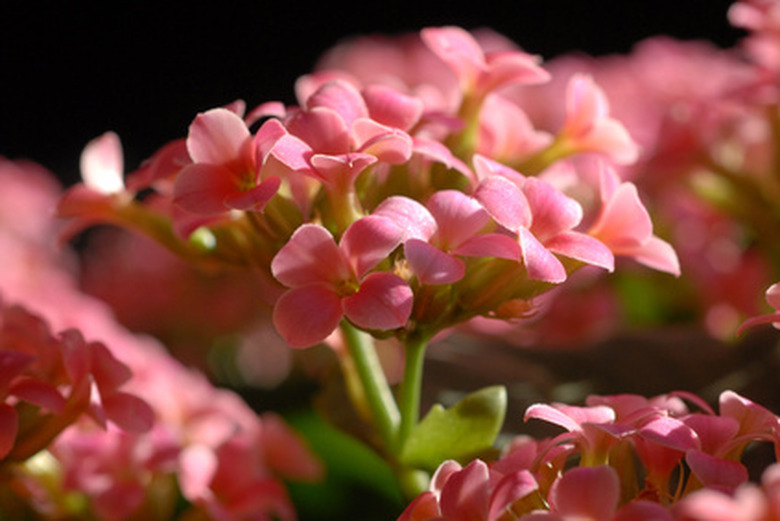How To Prune Kalanchoe
Kalanchoe is a flowering perennial plant with fleshy leaves and tissues reminiscent of a succulent. They do not tolerate frost or cool temperatures and are grown widely as houseplants most of the year but can grow outdoors in temperate, frost free climates roughly USDA zone 8b and above. Kalanchoe has modest pruning requirements which consist mostly of removing dead flower heads. On small plants, do this with small scissors which are easy to maneuver and see what you are cutting. On larger, mature plants, pruning shears will do the job nicely.
Step 1
Trim away any broken, yellow, brown or damaged leaves as they mar the appearance of the plant and invite disease and pests. Cut the leaf off down at the base of its stem, just above where it connects with the branch.
- Kalanchoe is a flowering perennial plant with fleshy leaves and tissues reminiscent of a succulent.
- Kalanchoe has modest pruning requirements which consist mostly of removing dead flower heads.
Step 2
Deadhead the multiflowered bloom once each of the small flowers has unfurled and then died back. Cut the flower head stem down to just above a healthy pair of green leaves, leaving just an 1/8 inch of stem above the leaves and compost or discard it.
Step 3
Reduce the size of the plant or reduce legginess and increase fullness by pruning back the branches by several inches. Remove no more than one-third of the plant's tissues with such a rejuvenating pruning. Do not shear the plant, but cut branch by branch following the form of the plant to maintain a natural and roughly symmetrical plant.
Transplant Kalanchoe
Prepare a flower bed or pockets in a rock garden that receives full sun with afternoon shade and has sandy soil. Pop transplants out of their nursery packs in late fall or early winter when temperatures are not expected to drop below 40 degrees Fahrenheit. Kalanchoe bloom for about six weeks, then rest until prompted to bloom by winter's cycle of short days and long nights. Slide your hand over the top of the potted kalanchoe with your fingers parted around the central stem of the plant and your hand against the rim of the pot. Turn the pot on its side gently and pull back the pot. Flowering kalanchoes grow relatively slowly and do not often need repotting. Fill a terracotta pot 2 inches larger in diameter than its current pot with pebbles and a soil mix intended for potting cacti. Pinch off any dark brown or black mushy roots. Firm soil around the pot and water well. Place the pot in a sunny window where it can receive at least four hours of direct sun each day.
- Deadhead the multiflowered bloom once each of the small flowers has unfurled and then died back.
- Fill a terracotta pot 2 inches larger in diameter than its current pot with pebbles and a soil mix intended for potting cacti.
Things Needed
- Small scissors
- Pruning shears
References
- Mississippi State University: Enjoy Indoor Plants this Holiday Season
- North Dakota State University: Questions on Kalanchoe
- Univerisity of Florida Extension Miami Dade County: Flowerbeds: Some Water-Wise Choices for Miami Dade
- University of Illinois Extension: Plant Palette – Kalanchoe
- Purdue University Extension: Indoor Plant Care
- Bachman's: Kalanchoe
- University of California Marin County Master Gardeners: Low-Water Succulents Offer Textures, Shapes, Colors and Sizes to Enhance Any Garden
- Bluebird Nursery: Rock Garden or Alpine
